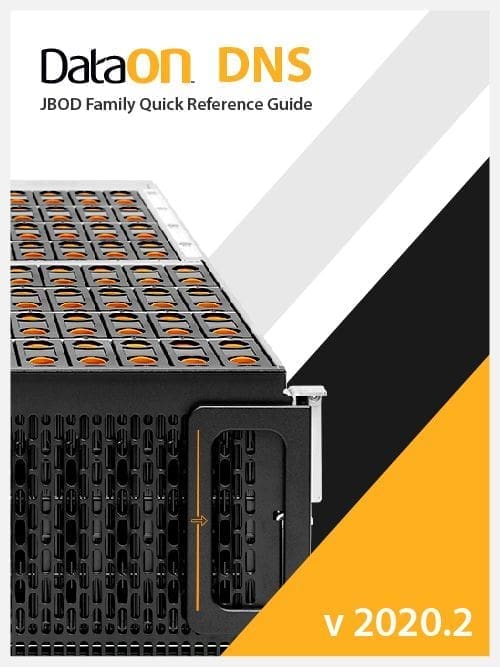Highlights
As part of a Windows Server-based storage solution, the DataON DNS-2524 helps to reduce complexity and cost from deploying a traditional SAN solution. Using a virtualized environment provides greater flexibility and scalability as your backup storage needs grow.
Tailored to withstand storage capacity demands in the software-defined data center, the DNS-2524 provides high storage density while delivering outstanding low dollar-per-GB costs for cold, warm and even hot storage workloads. It also leverages high-efficiency power to maximize performance-per-watt savings to reduce TCO.
The DataON DNS-2524 supports 2.5” 12Gbs/s SAS HDDs or SSDs in a 24-bay, 2U chassis. Equipped with redundant hot swap drive bays and power and cooling modules, it has dual I/O controllers for redundant and maximum availability, supporting up to 4800 MB/sec bandwidth per connector. Mix-and-match nearline storage, 10K RPM HDDs, and SSDs within the same enclosure with universal brand support.
Certified for Microsoft Windows Server 2019, the DataON DNS-2524 can be used either as a standalone direct attach JBOD or a storage expansion in conjunction with server nodes managed by a RAID controller or a host bus adapter (HBA). When used in conjunction with DataON S2D server nodes for software-defined converged storage, the DNS-2524 is part of a validated scale-out file server (SoFS) solution for Azure Stack HCI.
Features
- 2U chassis with 24-bay carriers
- Supports 2.5” enterprise class SAS-3 or 12Gb/s SAS Windows Server-certified drives
- Dual-SAS JBOD controller module
- Each SAS JBOD controller module consists of three mini-SAS HD ports
- Power supply and cooling system contained in one module for efficient cooling
- Two 400W redundant hot swappable power supplies
- Incorporates cableless design for maximum signal integrity
- Utilizes industry-standard SCSI enclosure servers (SES) to monitor enclosure and disk environment conditions
- System LED indications
- Fan speed monitoring
- Power supply monitoring
- System voltage monitoring
- System temperature monitoring





